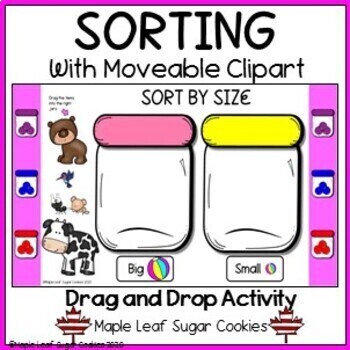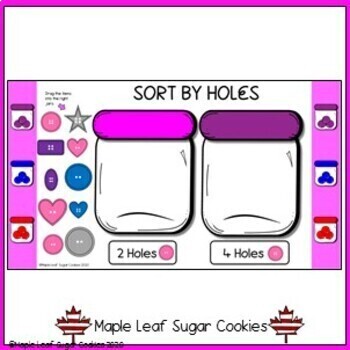SORTING!!! Sort by Many different Attributes! Google Slides Activity!
- Google Slides™

What educators are saying
Description
SORTING GOOGLE SLIDES MATH CENTER. Teach how to sort by attributes. Sort by SIZE (2 and 3 ways: big/small or big/medium/small), sort by COLOR (red, yellow, orange, blue), sort by SHAPE (2 ways: square, circle or diamond, hexagon), sort by DIRECTION, ANIMAL, FLAVOR, HOLIDAY, No. of HOLES, No. of LEGS, and many more!!! THERE ARE SO MANY WAYS TO SORT IN THIS INTERACTIVE ACTIVITY!!! Teach students all about sorting in this fun and engaging way. There are multiple opportunities to sort within the various categories. Children drag the clipart into the correct jars by matching the headings/labels on each slide.
Excellent for use with interactive whiteboards, assessments, and/or Google Classroom!
Google Slides Format. Easy for Distance Learning or Remote Learning.





